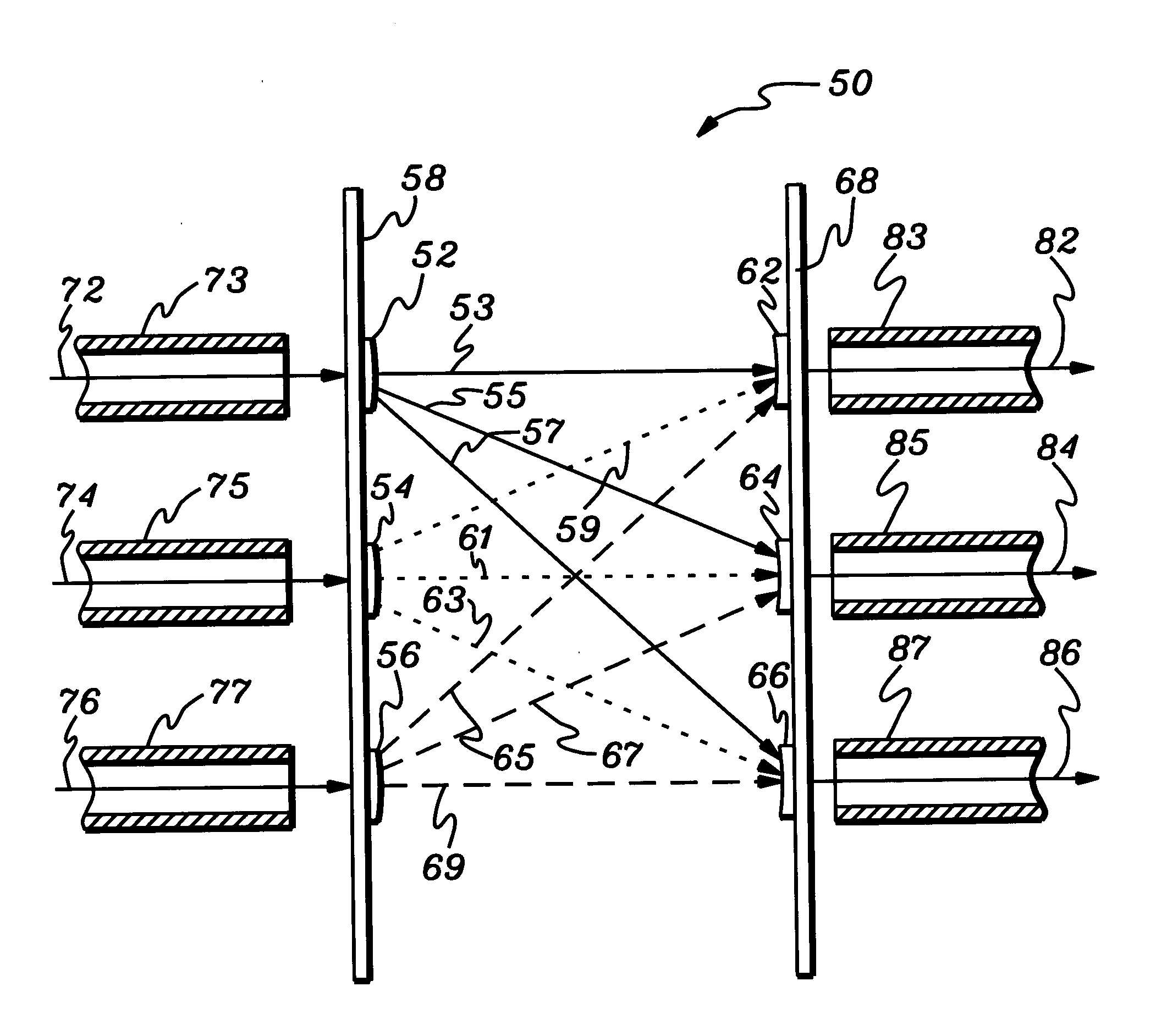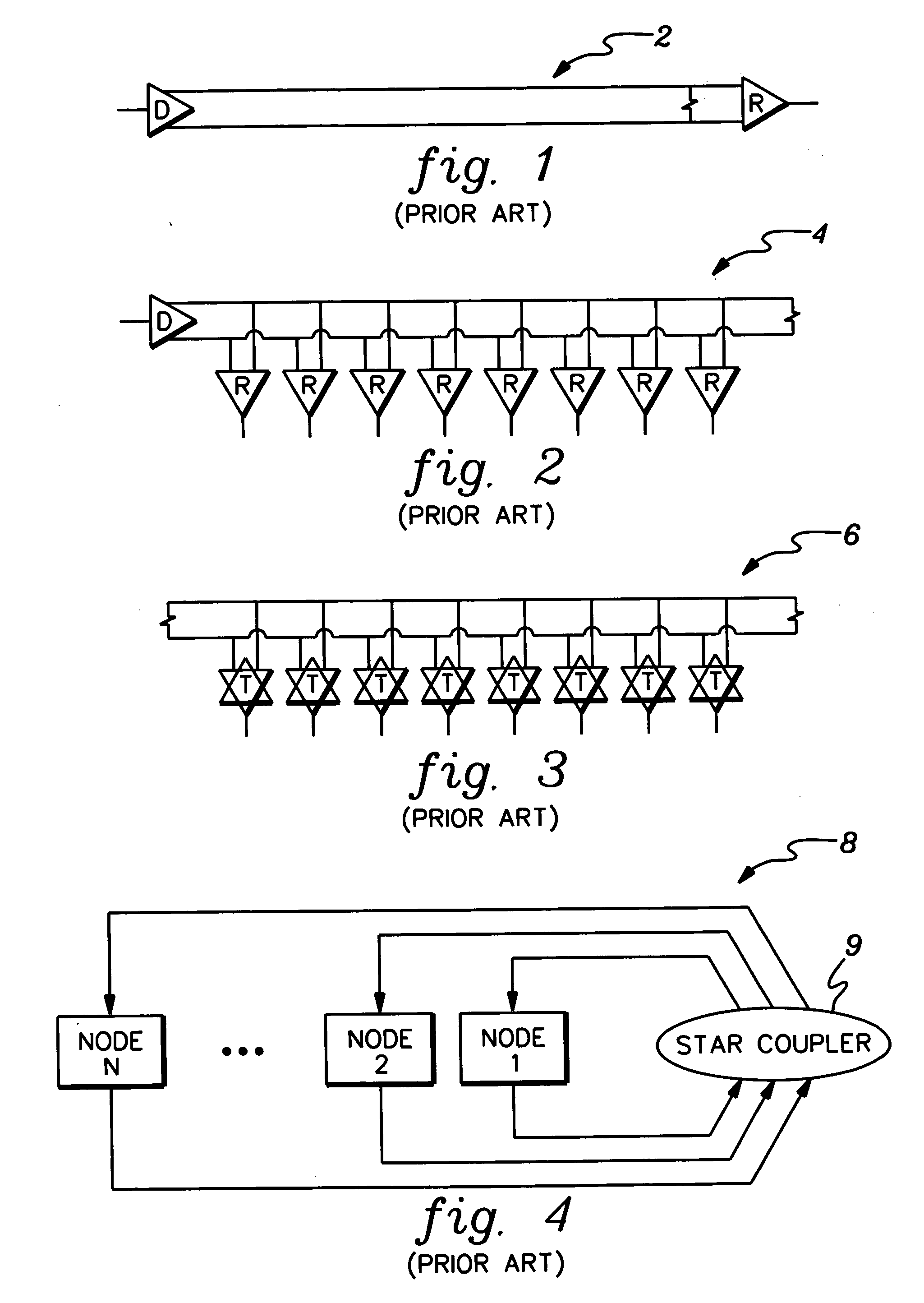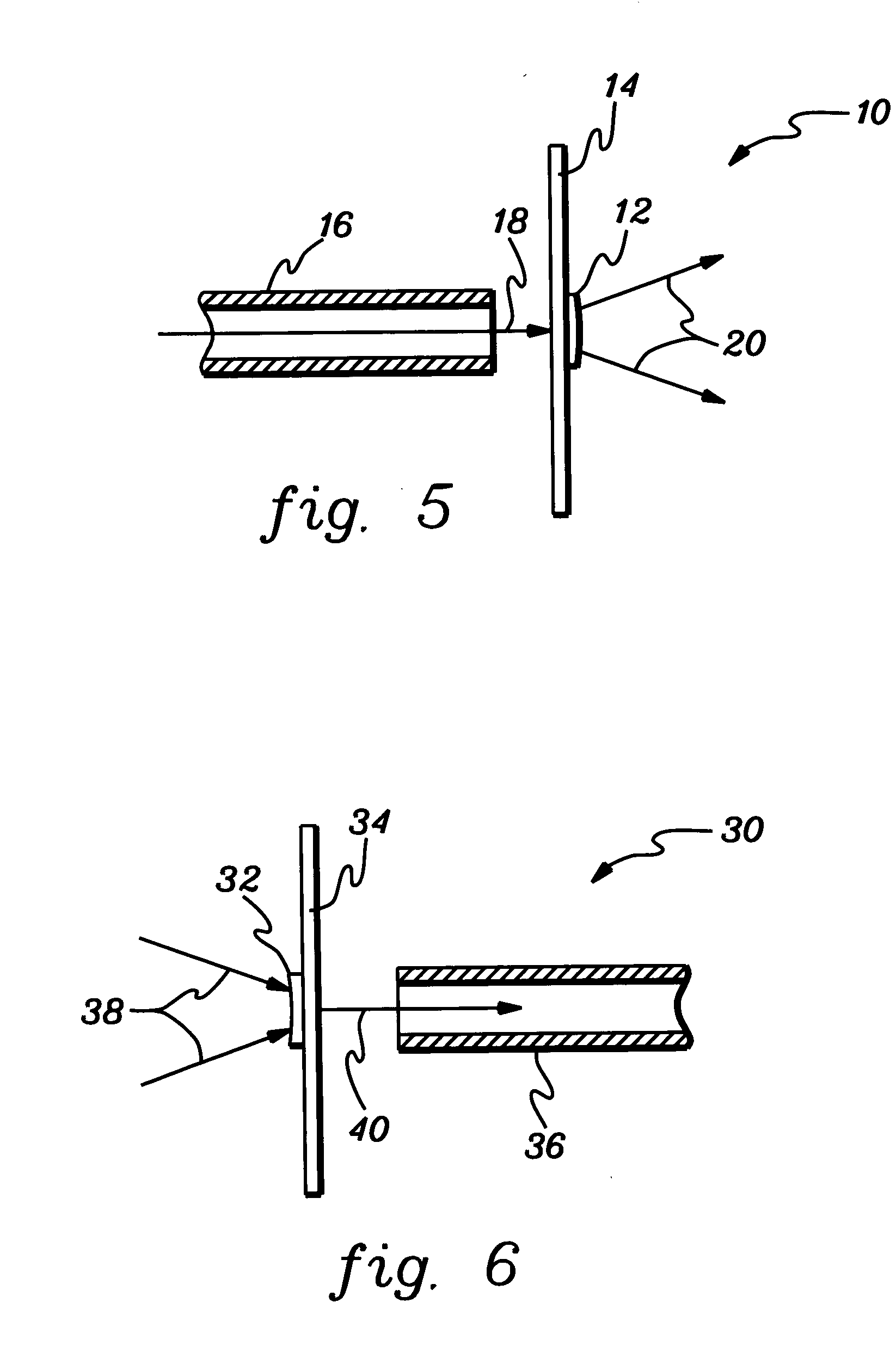Methods and devices for coupling electromagnetic radiation using diffractive optical elements
a technology of diffractive optical elements and electromagnetic radiation, applied in the direction of optics, bundled fibre light guides, instruments, etc., can solve the problems that the design of prior art optical star couplers is typically limited to providing coupling function for single-line, serial links
- Summary
- Abstract
- Description
- Claims
- Application Information
AI Technical Summary
Problems solved by technology
Method used
Image
Examples
Embodiment Construction
[0032]FIGS. 1, 2, 3, and 4 illustrate typical optical linkage systems according to the prior art. FIG. 1 is a schematic diagram of a point-to-point optical link system 2 between a single optical driver (D) and a single optical receiver (R). FIG. 2 is a schematic diagram of a multi-drop optical link system 4, according to the prior art having one driver (D) and multiple receivers (R). FIG. 3 is a schematic diagram of a multi-point optical link system 6 having multiple drivers and multiple receivers as indicated by transmitters (T) according to the prior art. FIG. 4 is a schematic diagram of a optical system 8 having an optical star coupler 9 linking multiple nodes in a computer network according to the prior art as proposed by J.-H. H a and T. M. Pinkston, in the Journal of Parallel Distributive Computing, vol. 60, 169-188, 2000. Aspects of the present invention make the system illustrated in FIG. 4 technically and economically feasible.
[0033] In the context of the present invention...
PUM
 Login to View More
Login to View More Abstract
Description
Claims
Application Information
 Login to View More
Login to View More - R&D
- Intellectual Property
- Life Sciences
- Materials
- Tech Scout
- Unparalleled Data Quality
- Higher Quality Content
- 60% Fewer Hallucinations
Browse by: Latest US Patents, China's latest patents, Technical Efficacy Thesaurus, Application Domain, Technology Topic, Popular Technical Reports.
© 2025 PatSnap. All rights reserved.Legal|Privacy policy|Modern Slavery Act Transparency Statement|Sitemap|About US| Contact US: help@patsnap.com



